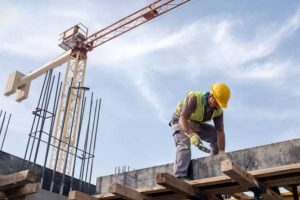The Seoul History Museum will launch a night tour program next week to stroll through Gyeonghui Palace in the center of the South Korean capital and learn about its history.
The program, which will run from Friday to Saturday next week, is the first of its kind since the palace opened to visitors. You will have an instructor and a writer who will guide the tour of the palace and explain its meaning and historical context.
There will be two sessions a day, lasting two hours, at 7:00 pm and 7:30 pm. Each session will allow the participation of up to 25 people. Those who want to participate can register at: museum.seoul.go.kr either yeyak.seoul.go.kr.
Medical crisis in South Korea: government warns of harsh measures against doctors’ strikes
Gyeonghui Palace (경희궁) is one of the “Five Great Palaces” built during the Joseon Dynasty in Seoul, South Korea. Also known as the Western Palace, this complex has a rich history and has gone through several transformations over the centuries.
It was built in 1617 during the reign of King Gwanghaegun. Gyeonghui Palace was created as a secondary residence for the royal family. Its purpose was to serve as an alternative to Gyeongbokgung Palace, offering a refuge in times of crisis and an additional residence for events and ceremonies.
The place suffered several damages throughout its history. It was burned down in 1623 during the rebellion against King Gwanghaegun and again faced destruction during the Japanese occupation in the 20th century, when much of its land was expropriated and sold.
Throughout the 20th and 21st centuries, extensive restoration work has been carried out. In the 1980s, a project was begun to rebuild the palace to its former glory, although the process is not completely finished.
The palace follows the traditional Korean style of palace architecture, with pavilions and halls built in harmony with the surrounding nature. Gyeonghui-gung, as it is known locally, was originally made up of more than 100 buildings, although only a few have been restored.
Notable Buildings:
-
- Geungnakjeon Hall: The main throne room of the palace, used for official ceremonies and meetings.
- Sungjeongjeon Hall: Originally the room where the king discussed matters of state with his ministers.
- Haminjeong Pavilion: A place of rest and contemplation, with panoramic views of the gardens.
The palace gardens are notable for their landscape design, incorporating ponds, bridges, and paths. The main gate, Heunghwamun, was restored to its original location in 1995.


![[Img #74664]](https://thelatestnews.world/wp-content/uploads/2024/12/James-Watson-The-controversial-genius-behind-the-double-helix-150x150.jpg)









Add Comment